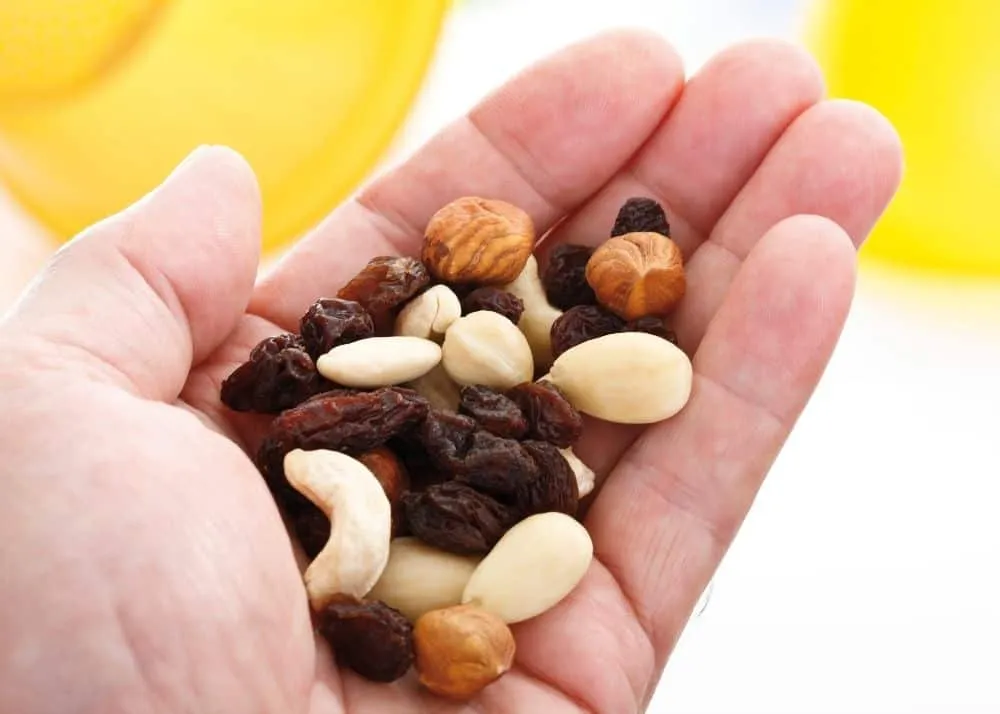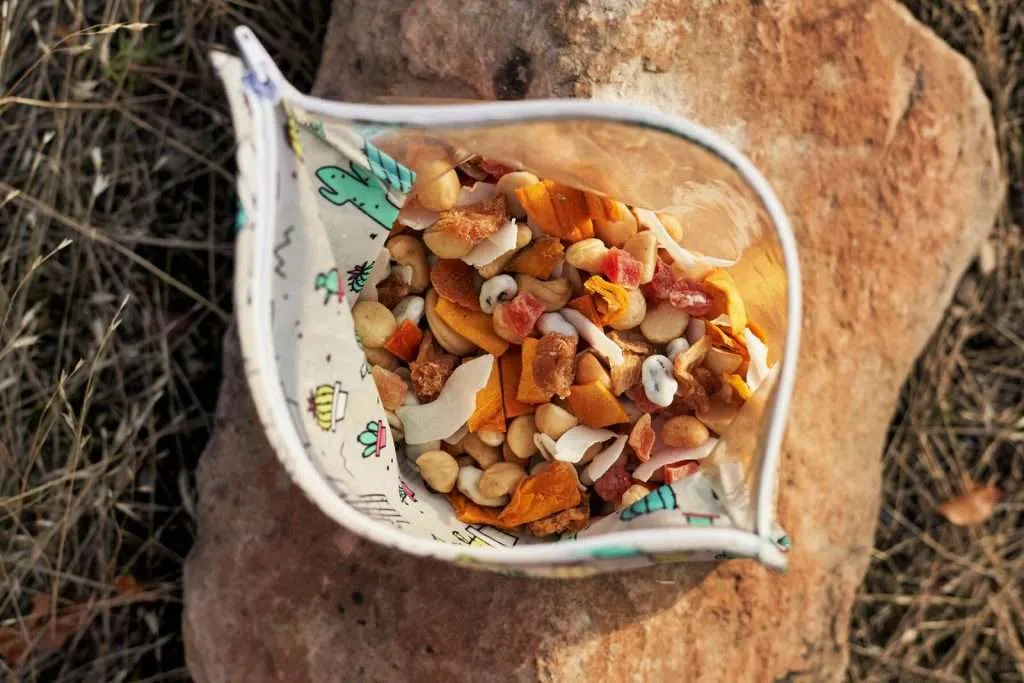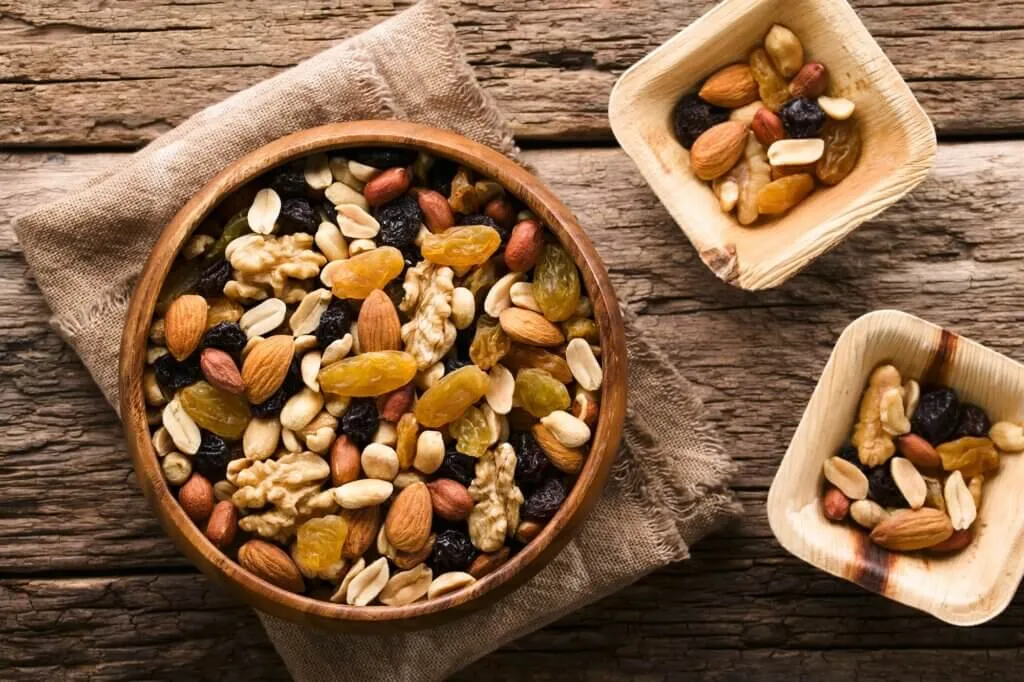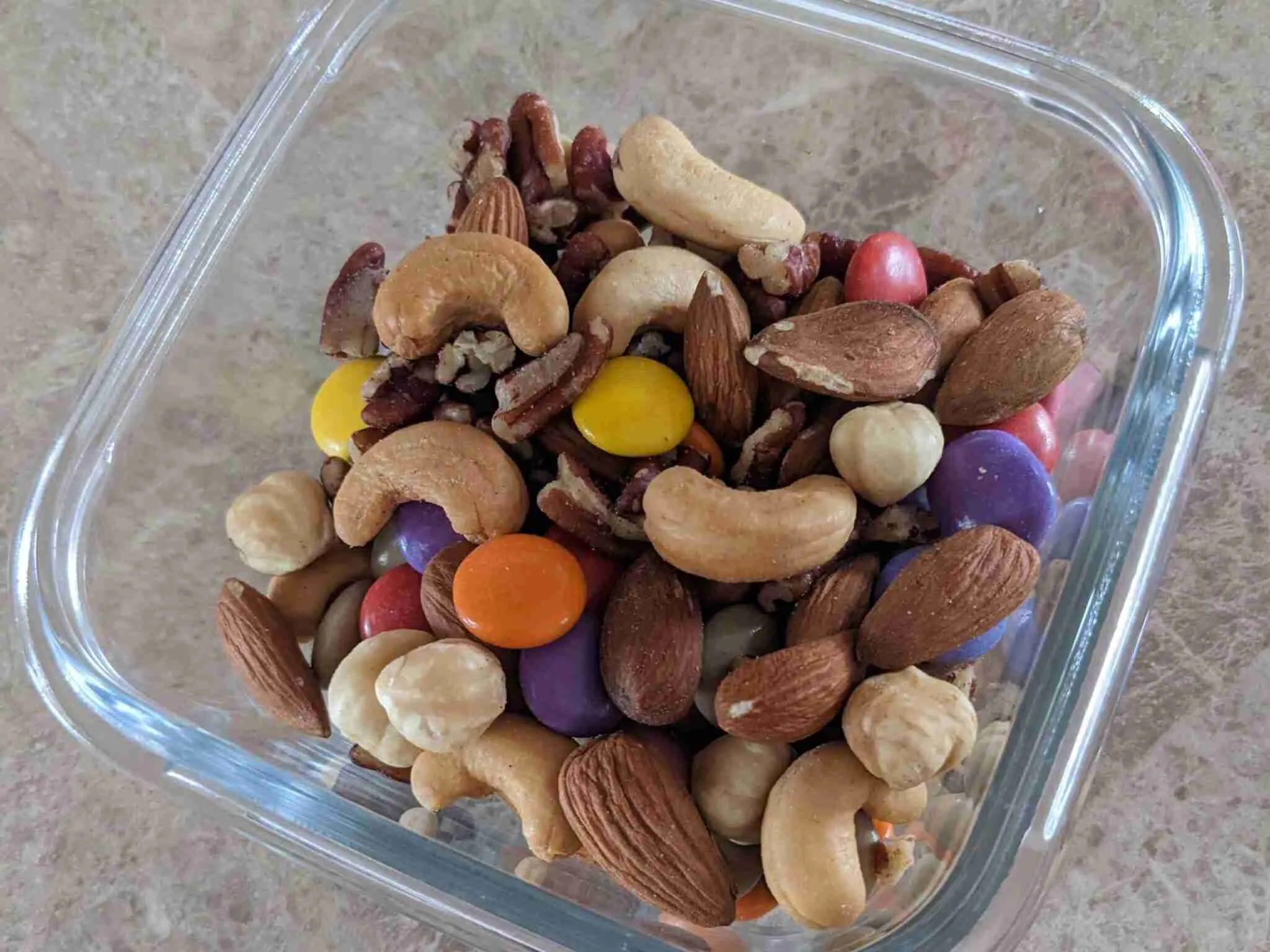
Safe Trail Snacking: The Complete Guide to Energizing and Secure Hiking Food
After years of exploring trails across the country, I've learned that safe trail snacking isn't just about avoiding hunger—it's about maintaining energy, ensuring food safety, and making smart nutritional choices that keep you strong on every adventure. This comprehensive guide covers everything from wilderness food safety to high-energy snack selection, drawing from both scientific research and real-world hiking experience. Whether you're planning a day hike or multi-day backpacking trip, these proven strategies will help you fuel your adventures safely and effectively. Visit Nature Guests for more outdoor adventure guides.
Understanding Safe Trail Snacking Fundamentals

When I first started hiking regularly, I made countless mistakes with my trail nutrition. I'd pack whatever was convenient, often ending up with spoiled food, insufficient energy, or worse—getting sick miles from the trailhead. Safe trail snacking became my obsession after experiencing firsthand how proper nutrition can make or break an outdoor adventure. Through years of trial and error, conversations with park rangers, and studying wilderness nutrition science, I've developed a systematic approach that prioritizes both safety and performance.
The foundation of safe trail snacking rests on three critical pillars: food safety protocols, energy optimization, and practical portability. Unlike regular snacking, trail nutrition must account for temperature fluctuations, limited storage options, weight constraints, and the increased caloric demands of outdoor activities. During my recent backpacking trip through the Rocky Mountains, I consumed over 4,000 calories daily while maintaining strict food safety standards—a balance that requires careful planning and the right knowledge.
Understanding caloric density becomes crucial when every ounce matters. The best trail snacks provide 400-500 calories per 100 grams, combining quick-release carbohydrates for immediate energy with sustained-release proteins and healthy fats. I've learned to calculate my daily energy needs based on activity level, pack weight, terrain difficulty, and weather conditions. For day hikes, I typically plan for 200-300 calories per hour of hiking, while multi-day trips require 3,500-5,000 calories daily depending on the circumstances.
Pro Tip: Avoiding dehydration while hiking is just as critical as proper nutrition. I always pair my snacking strategy with hydration timing to maximize energy absorption and prevent digestive issues on the trail.
Temperature control significantly impacts food safety during outdoor adventures. I've witnessed too many hikers get sick from improperly stored dairy products or spoiled meat during summer hikes. The "danger zone" between 40-140°F allows harmful bacteria to multiply rapidly, making shelf-stable options essential for safe trail snacking. My approach focuses on non-perishable foods that maintain nutritional value and taste appeal even after hours in varying temperatures.
🥜 Get Premium Trail Mix on Amazon - Perfect for Safe Trail Snacking!The psychological aspect of trail nutrition often gets overlooked, but I've found that familiar, enjoyable snacks boost morale during challenging hikes. When I'm facing a steep climb or dealing with adverse weather, having a favorite trail snack can provide the mental boost needed to push through difficult moments. This is why I recommend including at least one "comfort food" item in every trail snack selection, balanced with more performance-oriented options.
Essential Food Safety Guidelines for Trail Adventures
Food safety in wilderness settings requires a completely different mindset than kitchen food preparation. I learned this lesson during my first multi-day backpacking trip when improperly handled trail food left my hiking partner seriously ill 15 miles from the nearest road. Since then, I've developed strict protocols that have kept me healthy through hundreds of outdoor adventures, from desert hikes in Arizona to alpine expeditions in Alaska.

Hand hygiene becomes exponentially more important when you're miles from running water and medical facilities. I carry alcohol-based hand sanitizer with at least 60% alcohol content and use it religiously before handling any food. During my recent section hike of the Appalachian Trail, I witnessed several hikers develop gastrointestinal issues that could have been prevented with proper hand washing protocols. For situations where sanitizer isn't enough, I pack biodegradable soap and follow Leave No Trace principles for washing hands away from water sources.
Cross-contamination prevention requires special attention in the limited space of a backpack. I use separate containers for different food types and never allow raw meat or unwashed produce to contact ready-to-eat snacks. Color-coded storage bags help me maintain organization: red for meat products, green for fresh produce, blue for dairy items, and clear for shelf-stable snacks. This system has prevented countless potential food safety incidents during my outdoor adventures.
Safety Alert: Never pack perishable items like mayonnaise-based sandwiches, dairy products, or raw meat without proper refrigeration. These foods can become dangerous within hours in outdoor temperatures. Focus on shelf-stable options for truly safe trail snacking.
Water quality directly impacts food safety, especially when rehydrating dried foods or cleaning eating utensils. I always treat water from natural sources using filtration, purification tablets, or boiling before using it for food preparation. During my thru-hike experience, I met several hikers who became ill from using untreated water to clean their cooking gear. Investing in a reliable water treatment system is non-negotiable for safe trail snacking.
Temperature monitoring becomes critical during extended outdoor trips. I use a small digital thermometer to check food temperatures, especially when reheating meals or storing perishables in insulated containers. Foods should be kept below 40°F or above 140°F to prevent bacterial growth. For day hikes, I focus on shelf-stable options that don't require temperature control, while multi-day trips demand more sophisticated food safety strategies.
💪 Shop Organic Protein Bars - Safe & Nutritious Trail Fuel!Proper waste disposal is often overlooked but crucial for maintaining food safety standards. I pack out all food waste, including fruit peels and nut shells, following Leave No Trace principles. Food scraps attract wildlife and can contaminate water sources, creating safety hazards for future hikers. My waste management system includes odor-proof bags and a strict pack-in, pack-out policy that has served me well in bear country and pristine wilderness areas.
Hydration Connection: Altitude and hydration tips become especially important when practicing safe trail snacking at elevation, where dehydration can mask food poisoning symptoms and create dangerous situations.
Food storage containers must be both airtight and durable enough to withstand the rigors of backpacking. I've tested dozens of container systems and prefer hard-shell containers for crushing-sensitive items and flexible pouches for space efficiency. Bear-proof storage requirements vary by location, but I always research local regulations before departure. My container system has evolved through trial and error, balancing weight, durability, and safety requirements specific to each destination.
High-Energy Snack Categories for Sustained Performance
Understanding different energy sources has revolutionized my approach to safe trail snacking. During my early hiking days, I relied heavily on sugary snacks that provided quick energy spikes followed by crashes that left me exhausted. Through experimentation and studying sports nutrition, I've developed a categorized approach that provides sustained energy throughout entire hiking days, from dawn patrol starts to sunset finishes.
Quick-release carbohydrates serve as emergency fuel during high-intensity climbing or when energy levels drop dramatically. Simple sugars from dried fruits, energy chews, or dark chocolate provide immediate energy within 15-30 minutes of consumption. I strategically consume these during steep ascents or when I feel energy levels declining. However, I've learned to pair them with slower-burning fuels to prevent the inevitable energy crash that follows pure sugar consumption.
Complex carbohydrates form the backbone of my sustained energy strategy. Whole grain crackers, oats, and quinoa-based snacks provide steady glucose release over 2-4 hours, perfect for maintaining consistent energy during long hiking segments. My favorite combination includes whole grain crackers with nut butter, which provides both immediate and sustained energy while delivering essential nutrients. This combination has powered me through countless 20+ mile days without energy crashes.

Healthy fats provide the most calorie-dense energy source available to hikers, delivering 9 calories per gram compared to 4 calories per gram from carbohydrates and proteins. Nuts, seeds, nut butters, and olive oil-based snacks sustain energy for extended periods while providing essential fatty acids for cellular function. During ultra-endurance hikes, I consume 30-40% of my calories from healthy fats, which has dramatically improved my energy stability and reduced food weight.
Pre-Hike Prep: Pre-hike fitness preparation includes training your digestive system to handle trail foods efficiently. I practice my snacking strategy during training hikes to identify optimal timing and combinations.
Protein requirements increase significantly during multi-day backpacking trips when muscle recovery becomes crucial for maintaining performance. Complete proteins from jerky, protein bars, or nut-based snacks help repair muscle damage and maintain strength throughout extended adventures. I aim for 1.2-1.6 grams of protein per kilogram of body weight daily during backpacking trips, distributed throughout the day rather than consumed in large quantities at once.
🥩 Discover Epic Protein Bars - Keto-Friendly Trail Nutrition!Electrolyte balance becomes critical during extended outdoor activities, especially in hot weather or at altitude. Sodium, potassium, and magnesium losses through sweat must be replaced to maintain proper muscle function and prevent cramping. I incorporate naturally salty snacks like salted nuts or pretzels rather than relying solely on artificial electrolyte supplements. My electrolyte strategy varies by season, with summer hikes requiring significantly more sodium replacement than winter adventures.
Timing nutrition intake optimizes energy availability when it's needed most. I consume quick-acting carbohydrates 30-60 minutes before challenging climbs, steady-release foods during moderate hiking, and protein-rich snacks during rest stops for recovery. This strategic approach has eliminated the energy rollercoaster I experienced during my early hiking years and maintains consistent performance throughout entire hiking days.
Homemade Trail Mix Recipes and Preparation Tips
Creating custom trail mixes has become one of my greatest passions in outdoor nutrition. Store-bought options often contain excessive sugar, artificial preservatives, or ingredients that don't align with my dietary needs. After years of experimentation, I've developed several signature recipes that provide optimal nutrition while maintaining the enjoyment factor that makes safe trail snacking both practical and pleasurable during long hiking days.
My go-to "Endurance Explorer" mix combines raw almonds, cashews, and walnuts (40% of total volume) with dried cranberries, apricots, and banana chips (30% of volume). The remaining 30% includes dark chocolate chips, coconut flakes, and pumpkin seeds. This ratio provides sustained energy from healthy fats, quick energy from natural sugars, and essential minerals from varied nuts and seeds. The chocolate serves as both a morale booster and quick energy source during challenging hiking segments.
My Premium "High Altitude" Trail Mix Recipe
- 2 cups mixed raw nuts (almonds, cashews, pecans)
- 1 cup dried fruit (unsweetened cranberries, apricots)
- ½ cup dark chocolate chips (70% cacao or higher)
- ½ cup coconut flakes (unsweetened)
- ¼ cup chia seeds or hemp hearts
- ¼ cup freeze-dried fruit (strawberries or blueberries)
- Pinch of sea salt
Preparation techniques significantly impact both shelf life and taste quality. I lightly toast nuts in a dry pan for 3-5 minutes to enhance flavor and improve digestibility, then cool completely before combining with other ingredients. Moisture control is critical—I use silica gel packets in storage containers and avoid mixing ingredients until just before packing for trips. This approach has extended my trail mix shelf life to 3-4 weeks while maintaining optimal taste and texture.
Seasonal variations keep my trail nutrition interesting while taking advantage of ingredient availability and pricing. Summer mixes emphasize hydrating dried fruits like watermelon and cantaloupe, while winter recipes include more calorie-dense nuts and seeds for cold-weather energy demands. My autumn "Harvest Hiker" blend features dried apples, cinnamon-dusted pecans, and maple-flavored granola clusters that perfectly complement fall foliage hikes.
Mental Game: Mental preparation for hikes includes planning comfort foods that boost morale. I always include one "treat" ingredient in my trail mixes to provide psychological comfort during challenging moments.
Storage solutions must balance portability with ingredient preservation. I use vacuum-sealed bags for longer backpacking trips and portion individual servings into reusable containers for day hikes. Glass jars work well for home storage but aren't practical for trail use. My current system involves portioning trail mix into 2-ounce servings using lightweight, reusable silicon pouches that can be cleaned and refilled throughout multi-day adventures.
🌰 Premium Mixed Nuts for Trail Mix - Order Now!Cost analysis shows homemade trail mixes typically cost 60-70% less than premium store-bought options while providing superior ingredient quality and customization options. I buy nuts and dried fruits in bulk during sales, then portion and store them for months of trail adventures. This approach has reduced my snack costs from over $15 per hiking day to approximately $5, while dramatically improving nutritional quality and taste appeal.
Special dietary accommodations are easily managed with homemade mixes. My gluten-free version substitutes certified gluten-free oats for traditional granola, while my low-sugar variant emphasizes nuts and seeds with minimal dried fruit. For friends with nut allergies, I create seed-based alternatives using sunflower seeds, pumpkin seeds, and coconut chips. This flexibility has allowed our entire hiking group to enjoy safe trail snacking regardless of dietary restrictions.
Lightweight Protein-Packed Options for Backpackers
Protein becomes increasingly important during multi-day backpacking adventures when muscle recovery and strength maintenance are crucial for completing challenging itineraries. Traditional protein sources like fresh meat or dairy products aren't practical for safe trail snacking, so I've developed a systematic approach using lightweight, shelf-stable options that provide complete amino acid profiles without compromising food safety or pack weight.
Jerky represents the most calorie-dense protein option available to backpackers, providing 15-20 grams of protein per ounce while maintaining shelf stability for weeks without refrigeration. I prefer grass-fed beef jerky or turkey jerky made without artificial preservatives, though I've experimented with salmon jerky and even vegetarian alternatives made from mushrooms or soy. The key is selecting products with minimal sodium and sugar while maximizing protein content per gram of weight.

Protein bars offer convenience and portion control, but quality varies dramatically between brands. I look for bars with at least 15 grams of protein, minimal added sugars, and recognizable ingredients. My testing has shown that plant-based protein bars often digest easier during physical activity compared to whey-based alternatives. The best options provide 20-25 grams of protein per bar while maintaining palatability even after hours in a hot backpack.
Nut and seed combinations provide complete proteins when properly combined, along with healthy fats and essential minerals. My "Protein Power" mix combines almonds, sunflower seeds, and hemp hearts to create a complete amino acid profile. This combination provides approximately 6-8 grams of protein per ounce while delivering sustained energy from healthy fats. The versatility allows for creative combinations that prevent flavor fatigue during extended trips.
Digestibility Note: High-protein foods require more water for proper digestion. I increase my water intake by 20-30% when consuming protein-heavy trail foods to prevent digestive issues and maintain optimal nutrient absorption during hiking.
Powder supplements offer maximum protein density for ultralight backpacking, though they require careful handling to prevent moisture exposure. I use individual serving packets of plant-based protein powder that can be mixed with water or added to oatmeal for breakfast. This approach provides 20-30 grams of protein per serving while weighing less than one ounce, making it ideal for extended backcountry adventures where every gram matters.
🥩 Premium Grass-Fed Beef Jerky - Perfect Trail Protein!Legume-based snacks provide plant-based protein along with complex carbohydrates and fiber. Roasted chickpeas, edamame, or lentil-based crackers offer 4-6 grams of protein per serving while providing sustained energy release. I prepare batches of spiced roasted chickpeas before trips, seasoning them with curry powder, smoked paprika, or garlic for variety. These snacks maintain crunchiness for several days and provide satisfying protein without requiring refrigeration.
Fish-based proteins like salmon or tuna packets offer complete amino acids with omega-3 fatty acids for anti-inflammatory benefits. Individual serving pouches eliminate waste and provide portion control while maintaining food safety standards. I consume these during lunch breaks or evening meals rather than as continuous snacks due to their higher sodium content and potential for attracting wildlife in certain environments.
Protein timing strategies maximize muscle recovery and maintain strength during extended hiking days. I consume 15-20 grams of protein within 30 minutes of completing challenging climbs or long hiking segments to optimize recovery. This approach has reduced muscle soreness and maintained strength throughout week-long backpacking adventures. The key is spacing protein intake throughout the day rather than consuming large amounts at once, which the body cannot efficiently process during physical activity.
Wilderness Food Storage and Temperature Control
Proper food storage in wilderness environments requires understanding the unique challenges of temperature fluctuations, wildlife encounters, and moisture control. My approach to safe trail snacking has evolved through years of experience dealing with everything from bears raiding improperly stored food to discovering spoiled snacks after unexpected weather changes. These hard-learned lessons have shaped my current storage systems that prioritize both safety and food quality.
Bear-proof storage requirements vary significantly by location and season, but I've developed a universal system that meets or exceeds requirements for most wilderness areas. Hard-sided bear canisters provide the highest level of protection but add significant weight and bulk to pack loads. For areas without bear canister requirements, I use the PCT method: hanging food at least 12 feet high, 4 feet from tree trunks, and 6 feet below branches. This system has protected my food from wildlife encounters in countless camping situations.
Temperature control becomes critical during summer hiking when pack temperatures can exceed 120°F in direct sunlight. I use reflective emergency blankets to wrap food containers, creating a radiant barrier that reduces internal temperatures by 15-20 degrees. Insulated lunch bags work for day hikes but become impractical for multi-day trips due to weight and space constraints. Strategic packing places heat-sensitive items in the center of packs, surrounded by clothing or gear that provides additional insulation.
Personal Experience: During my thru-hike of the Colorado Trail, proper food storage prevented a potentially dangerous encounter with a black bear that had learned to associate backpacks with food. Investing in quality storage systems is always worth the added weight and expense. For more insights, check out safe trail snacking techniques I've developed over years of wilderness adventures.
Moisture control prevents food spoilage and maintains texture quality throughout extended trips. Silica gel packets in storage containers absorb excess humidity, while vacuum-sealed packaging removes air that contributes to spoilage. I double-bag items prone to moisture damage and use moisture-wicking materials like cedar chips for natural humidity control. This system has prevented countless instances of moldy bread, soggy crackers, and spoiled dried fruits during humid summer conditions.
Container selection balances durability, weight, and functionality based on specific trip requirements. Lightweight options like Ziploc bags work for short trips but fail under the stress of extended backpacking. I prefer hard-shell containers for crush-sensitive items like crackers or cookies, while flexible pouches accommodate oddly shaped items efficiently. My current system uses a combination of container types optimized for different food categories and trip durations.
Odor control prevents wildlife encounters while maintaining food quality. Scented items like jerky, cheese, or flavored snacks require special attention in wildlife-prone areas. I use odor-proof bags designed for hunting applications, which have proven effective during hundreds of nights in bear country. Even non-scented foods benefit from odor control measures, as hungry wildlife can detect subtle food odors that humans cannot perceive.
Cache strategies for long-distance hiking allow resupply without carrying excessive food weight. I research post offices, outfitters, and cache locations along planned routes, then mail resupply packages to myself containing non-perishable trail foods. This approach requires careful planning and understanding of postal service limitations, but it enables extended trips without compromising nutrition or safety standards. Proper package labeling and backup plans are essential for successful cache strategies.
Emergency food storage prepares for unexpected situations like weather delays, route changes, or equipment failures. I carry 1-2 extra days of calories in lightweight, shelf-stable formats like energy bars or dried fruits. These emergency rations require no preparation and provide essential nutrition if primary food supplies become unavailable. This safety margin has prevented potential emergency situations during several unexpected weather delays in remote wilderness areas.
Conclusion
Mastering safe trail snacking has transformed my outdoor adventures from potentially dangerous experiences to consistently enjoyable journeys. The knowledge and systems I've developed through years of trial and error, combined with scientific understanding of wilderness nutrition, provide a foundation for safe and effective trail nutrition that any hiker can implement regardless of experience level.
The key principles of safe trail snacking—prioritizing food safety, optimizing energy sources, and implementing proper storage techniques—work synergistically to create a comprehensive approach to wilderness nutrition. These strategies have allowed me to complete thousands of miles of hiking and backpacking without significant food-related incidents while maintaining energy and enjoyment throughout challenging adventures.
Remember that developing your personal safe trail snacking system requires practice and refinement based on individual needs, dietary restrictions, and activity levels. Start with day hikes to test strategies and gradually progress to more challenging adventures as your experience and confidence grow. The investment in proper planning and preparation pays dividends in safety, performance, and enjoyment on every trail adventure.
Continue developing your outdoor skills by exploring related topics that complement safe trail snacking practices. Understanding hydration strategies, physical preparation, and mental readiness creates a holistic approach to wilderness adventures that maximizes both safety and enjoyment on every trail.
Ready to Transform Your Trail Nutrition?
Start your safe trail snacking journey today with premium gear and nutrition designed for outdoor adventures.
🎒 Shop Trail Nutrition EssentialsThis comprehensive guide to safe trail snacking represents years of hands-on experience combined with nutritional science to help outdoor enthusiasts fuel their adventures safely and effectively. Continue exploring wilderness skills and outdoor nutrition strategies to enhance every trail experience.

